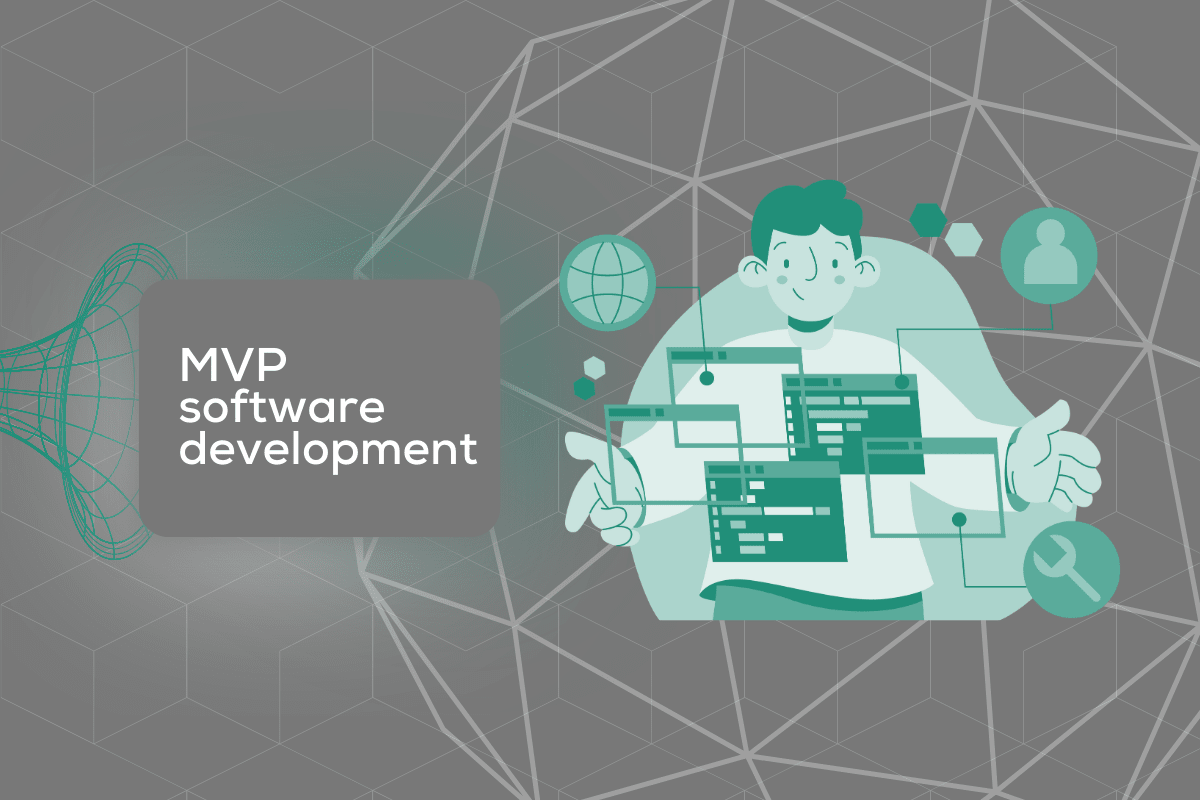Have you ever wondered what is the road from a business idea to a formed product? This process is long, and one of its main aspects is software development. If you have an idea that you wish to realize, MVP software development might just be the thing you need. Let’s help your idea achieve its full potential by taking a closer look at this process and all it entails.
What Is an MVP in Software Development?
What does MVP mean in product development? In the tech world, MVP stands for a minimum viable product. As the name implies, this is a product with just enough features to be desirable for users, allowing them to give their feedback for future development. Essentially, an MVP is released on the market to test the viability of the business idea.
It helps businesses and investors determine whether the product they’re trying to build is worth further investments and fills a gap in the market. This concept isn’t new – many globally successful platforms and apps have started their journey as nothing more than mere MVPs. Some of the most popular examples include Instagram, Facebook, and Spotify.
The Benefits of an MVP
An MVP is the most basic version of the software you’re trying to create. It has only the most vital features and functionalities of a product, and its main purpose is to help with designing and testing the product. When you’re starting from scratch, you’re building a product based only on your idea – you can’t know how that will resonate with users. MVP is here to give you that idea and show you if you’re going in the right direction. Here are the main benefits of building an MVP before you set out to create a full product:
- Confirming the validity of your idea,
- Testing the viability of a product before investing a lot of money into development,
- Quick launch of a product with a small budget,
- Seeing how users react to the product,
- Getting valuable feedback for further development,
- Gaining a pre-launch customer base,
- Reducing time-to-market for new features and updates.
Differences Between a Full Product and an MVP in Software Development
As you can see, an MVP is used to “test the waters” before the launch of the full product. The differences between these concepts lie in the features available and the purpose. Of course, the effort put into MVP development isn’t the same as for the full product. MVPs serve as a way to gain all the information you need to build successful products that users will love.

Is MVP for Software Development the Same As Proof of Concept?
What does MVP stand for in software development, and is it the same as a prototype or a proof of concept? These three terms represent completely different things. In the life cycle of software development, first comes the proof of concept. Its purpose is to show that the idea can be turned into a practical product – in other words, that it can be developed, technology-wise. Once you have the proof of concept, next comes the prototype. It is created to serve as a visual representation of the future product – the feedback is used to prevent user dissatisfaction.
The Steps of Building a Minimum Viable Product
Once you’ve decided that you need an MVP (which is certainly a good business decision!), the next thing to ask yourself is how to get it. There are several steps to creating a minimum viable product. Let’s see what MVP stages entail.
Step 1 – Define Your Business Idea
To create a successful app or platform, you need to spot the problem that has yet to be solved and come up with an idea on how to solve it. There’s no point in building something that no one has a use for, don’t you think? Your business idea should fill a gap in the market and stand out from competitors.
Step 2 – Identify the Target Audience and Conduct Market Research
Although it may seem appealing to create something that will work for everyone, this would likely be a mistake that would cost you in the future. Try to come up with a target group in the early stages of development. Focus your work on making a product that will specifically fit the buyer persona you’ve chosen. Market research is also invaluable – you have to take into account the size of the market and your competition.
Step 3 – Choose the Essential Features
The MVP shouldn’t have all the features you’ve intended for the full product. This is just a test run where you’ll get to test the value of several essential features – one of them should be the main feature that showcases the general idea of the product. Pick crucial features in a way that ensures the MVP will be usable for customers.
Step 4 – Build the Minimum Viable Product
At long last, it’s time to get to work. Building an MVP doesn’t take much time – it doesn’t need to be perfect. It just has to be usable for you to get the feedback you need. Choose the programming languages and other necessary tools, and get to development.

Reach Out to JuraTech Solutions, and We’ll Help You Build an MVP to Support Your Business Idea
Are you looking for the best way to explore the viability of your idea? JuraTech Solutions can help you on your way to success – facilitating the process of building a great product and software prototyping is what we do best. Whether you need desktop application development or mobile app development services, we are here to help you get an excellent MVP.
Of course, we don’t stop at MVPs – you can count on us in the post-validation stages as well, as we’ll be there to assist you with future development. Contact us to learn more about the work we do, and let’s create something innovative together!







